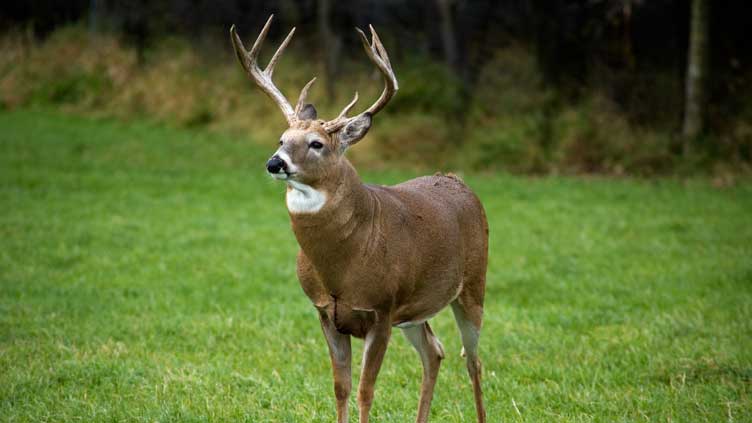From Montana to Tennessee, I’ve seen and heard stories of declining deer numbers in recent years. There’s a handful of reasons as to why the numbers have fallen, but the one we often overlook, or brush under the rug, is over-hunting. We’d much rather pin it on something like disease and disaster, but the reality is, in many parts of the country, over-hunting certain areas is leading to a dramatic decline in deer numbers.

What happened to the fields full of deer that we’ve witnessed in the past? Is over-hunting to blame?
In Phil Potter’s recent article, “Over-hunting: Just One of the Threats to Deer,” he shares the following information on the current situation for whitetail deer numbers.
Evansville Courier & Press / Phil Potter
It’s basic math at its best.
Suppose you’ve saved up for several years but suddenly you go on a spending binge. Eventually you’ll notice you’ve got only small change left in your account, and if you don’t quickly change your ways you’ll be bankrupt.
Now transfer that scenario to deer hunting. At first deer were managed and protected, then they got stigmatized, and now they’re dwindling in numbers. If you don’t believe it, just drive around, and count what you see. Or stroll through local woods and grasslands for a tally — physical sightings and well used deer paths are minimal in most areas.
For the first time in many years, hunters in southern Indiana are complaining they aren’t seeing deer in numbers they did only two years ago. You can’t find many deer (or any) in most Indiana State Parks but you may see the corpses of a few night runners that ended up as roadkill along Hoosier highways.
So what’s happened? For starters, consider the huge amount of bonus doe tags the Indiana Department of Natural Resources sells each year. Add increasing deer depredation permits, rising hunting pressure, habitat destruction, increased roadway traffic, insane vehicular driving patterns and occasional flare-ups of “Blue Tongue” disease, and it’s easy to see the salad days of deer hunting are close to being over.
In fact, some are saying the end may have arrived this year. But those who bagged behemoth bucks, thumb their noses at that thought.
Granted, there some scattered pockets of plenty. But generally, most hunters and remaining deer processors are acknowledging a downturn.
Indiana deer herds aren’t the only ones showing noticeable decline. Several Kentucky and Illinois deer hunters also reported a dearth of deer.
As land use changes, suitable wildlife habitat vanishes and protectionist attitudes start eroding. Now when deer come into urban backyards, they are more likely to get whacked by a crossbow bolt rather than photographed and shooed away.
If a state crows about a “record deer harvest,” be aware this also means a record number of hunters went afield or a record number of bonus deer tags was sold.
Boosting tag sales also ensures more deer will get killed until the law of diminishing returns kicks in.
Remember, for decades deer were literally stockpiled. Now the aim is get rid of as many as possible to appease insurance claims, crop depredation complaints, and bolster hunting success rates.
The return of whitetail deer was a major conservation success story across the nation. Now the pendulum of protection is swinging away from them.
Like foolish spendthrifts, we’re poised on bankrupting that conservation account.





